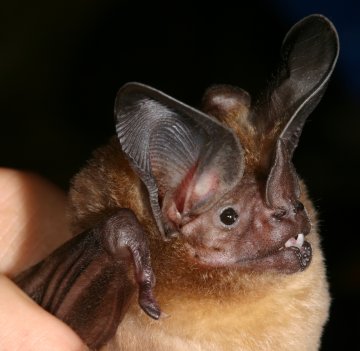A study of creatures that fly around at night supplies a new answer to the question of why some bats avoid hunting under a full moon.


Earlier work suggested that the bats were hiding from predators, according to Alexander Lang of the Karl Franzens University Graz in Austria. However, he and an international team of colleagues now propose that for insect-hunting bats, scarce food may be a major reason why they stay at home. One of their primary targets, katydids, also tend not to fly around much on bright, moonlit nights, the researchers report in an upcoming Oecologia.
Moonlight shyness has long been the stuff of anecdotes among bat specialists. “We ceased all catching efforts in two tropical studies during full moons,” recalls Paul Racey of the University of Aberdeen in Scotland.
Papers from the 1970s also reported a dearth of particular bat species during full moons. These species include some insect gleaners, a blood feeder, and some bats that cruise forest canopies for fruit. Adopting the term lunar phobia, the studies proposed that abundant moon glow increases a bat’s risk of being nailed by predators.
More recently, Lang and his colleagues focused on a tropical bat, Lophostoma silvicolum, that lurks to listen for katydids and other tasty insects. In Panama, the researchers tracked signals from six adult bats carrying transmitters and sensors that could distinguish when bats were flying and roosting. The bats typically hunted all night during the phases near new moons but flew much less during a full moon.
Infrared video cameras set up in two old termite nests where bats roosted confirmed the finding. Some bats spent almost three-quarters of a fully moonlit night at home as compared with about one-quarter of a dark night with a new moon.
The researchers also took a look at katydid comings and goings. They counted katydids trapped in fine nets or attracted to lights and measured the decibel level of forest sound at hours when most of the noise comes from these insects. All the measures indicated that the katydids, too, were less active on the brightest moonlit nights. Lang and his colleagues note that the insects may remain inactive and silent to be less conspicuous when conditions favor predators, other than bats, that rely strongly on sight.
“I do find this paper convincing,” comments bat researcher Johan Eklöf of Göteborg (Sweden) University. He says that he and his colleagues “share the belief that predator avoidance is … not as important as prey availability.”






